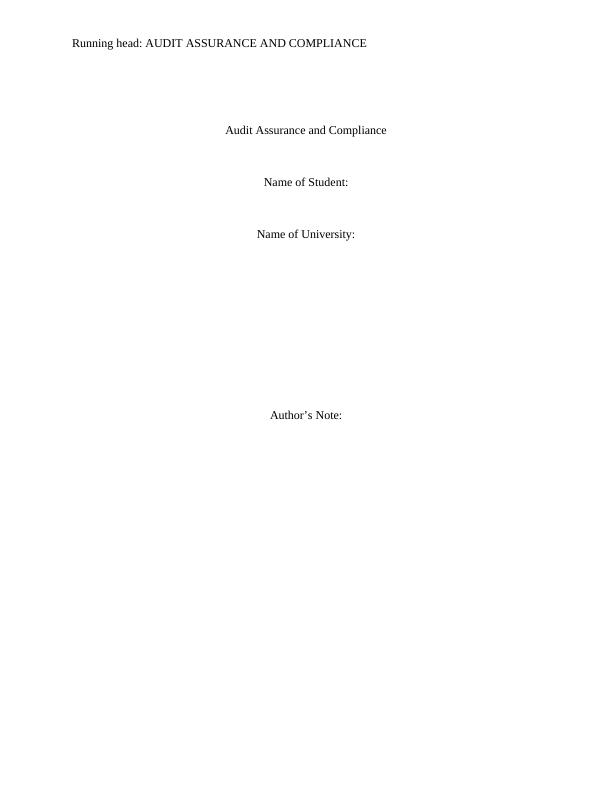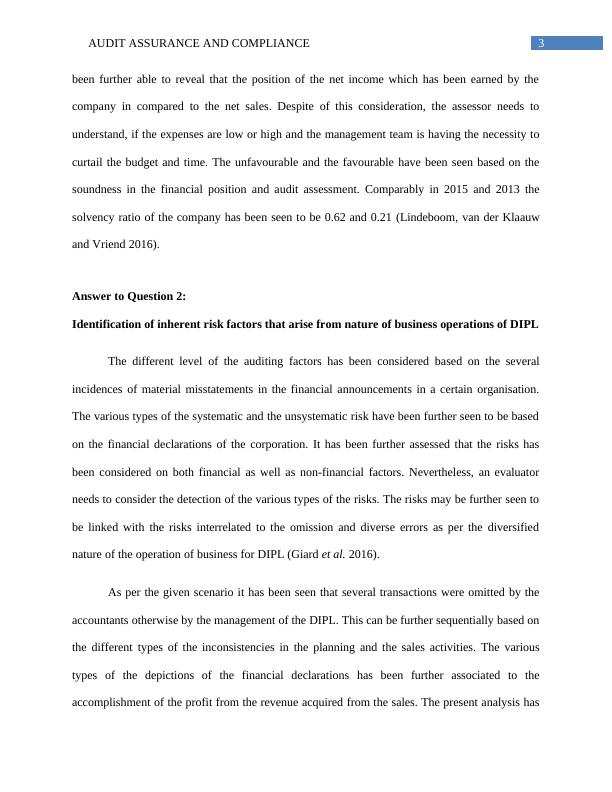HI6026 | DIPL | Audit Assurance & Compliance Report
11 Pages2458 Words30 Views
Holmes Institute Sydney
Audit, Assurance and Compliance (HI6026)
Added on 2020-03-13
About This Document
The report discusses the application of analytical procedures to the financial report information of DIPL. Also, It discusses the Identification of inherent risk factors that arise from the nature of business operations of DIPL and the Identification and explanation of two key fraud risk factors relating to misstatements arising from fraudulent financial reporting.
HI6026 | DIPL | Audit Assurance & Compliance Report
Holmes Institute Sydney
Audit, Assurance and Compliance (HI6026)
Added on 2020-03-13
ShareRelated Documents
End of preview
Want to access all the pages? Upload your documents or become a member.
HI6026 | Audit, Assurance & Compliance Assignment
|9
|2015
|39
HI6026 - Audit, Assurance and Compliance - Individual Report
|11
|2064
|177
HI6026 - Audit, Assurance and Compliance | Holmes Institute | Assignment
|9
|2081
|78
HI6026 - Audit,Assurance & Compliance | Financial Report
|9
|2083
|49
HI6026 Aspects of Audit, Assurance and Compliance
|12
|2824
|59
Audit Assurance and Compliance- Assignment
|8
|1756
|83




